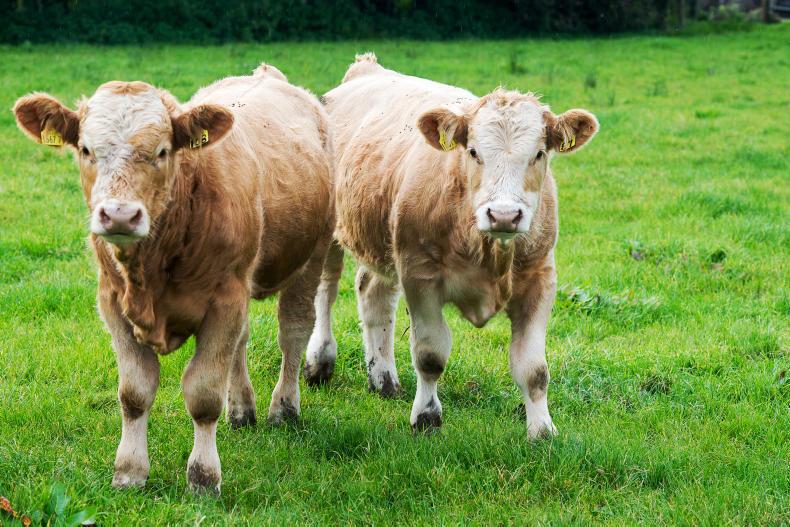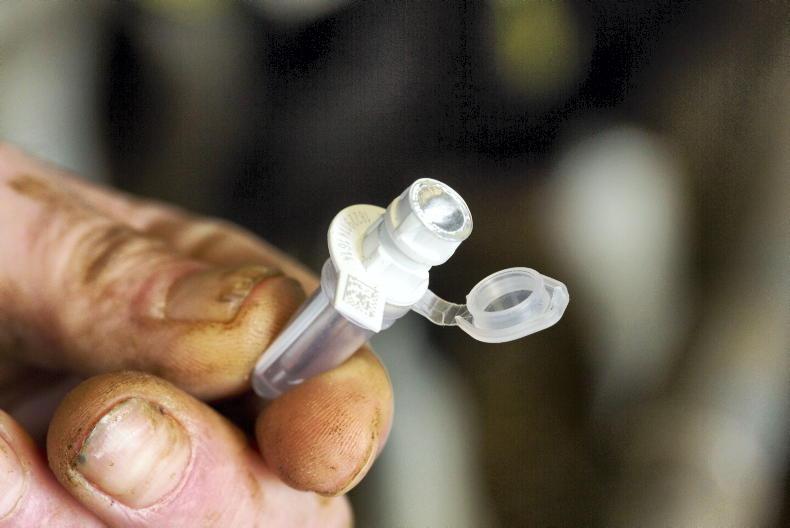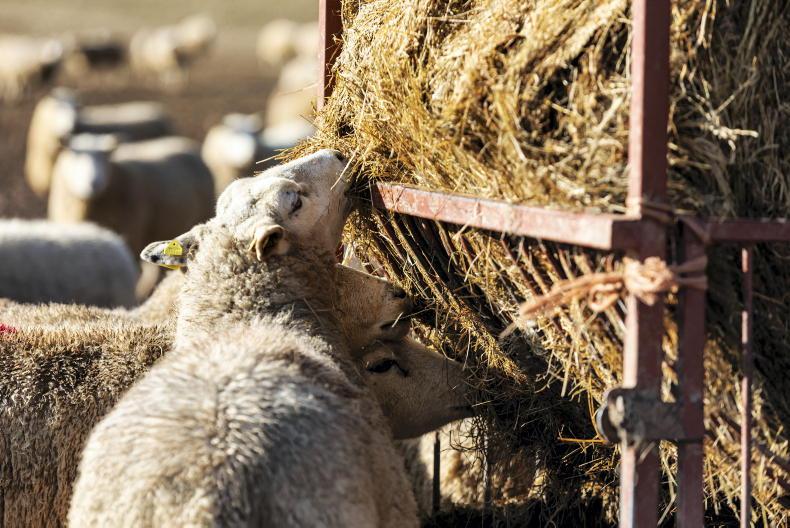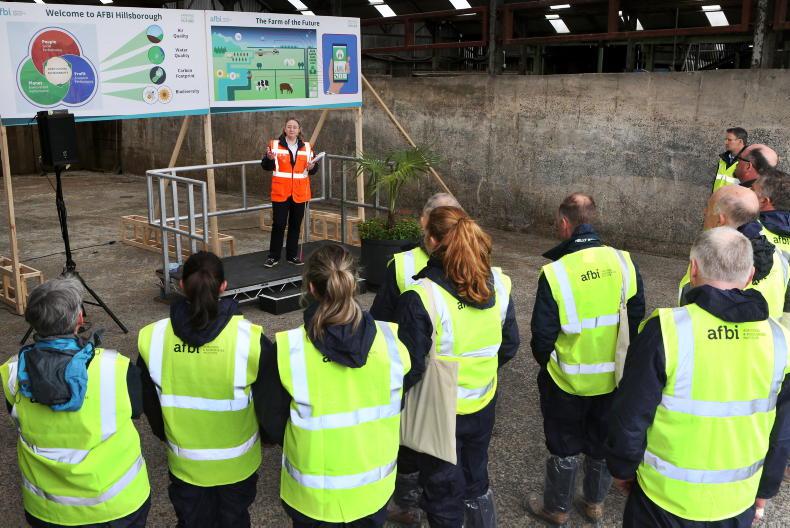Spring-born calves have performed well at grass during 2019 and many farmers are considering their options for marketing weanlings.
With depressed prices and market uncertainty surrounding the beef trade this winter, there will be more farmers considering selling spring-born calves at special weanling sales this autumn.
Buying demand
For farmers who normally sell calves every autumn, this option will be straight-forward. The only real concern is how will buying demand impact on market prices.

A lack of confidence in beef finishing and low prices has many farmers considering selling more cattle as weanlings this autumn.
But for farmers who normally sell calves as yearling stores, finish cattle as young bulls or finish cattle at 20 to 24 months of age, temporarily changing the system to sell calves this autumn will have major implications on future cashflow.
Vice-versa, farmers planning to hold calves over winter to utilise additional silage reserves should also consider carefully the impact of delaying sales.
Outlined are some of the main factors to consider before selling calves this autumn.
1 Are cattle in a saleable condition?
Where farmers plan on selling calves during autumn weanling sales, it is important animals are in the best possible condition to maximise sale value.
Cattle which are not properly prepared for sale attract less buying interest and ultimately will be sold at a lower price.
Also, are calves heavy enough to generate a price that will cover the cost of keeping the cow?
Even at a higher price per kilo, calves weighing 270kg to 300kg will struggle to generate a sale price that covers production costs.
In contrast, calves weighing 360kg to 400kg have a greater chance of selling at a price that covers costs.
Calves that will be sold this autumn should be eating concentrates to increase weight gains and body condition over the next month.
Where only a small group of weanlings will be sold in autumn, these calves should be separated from the main herd for priority management.
Ideally, calves should be weaned in advance of sale. Properly weaned calves are brighter and under less stress in sale yards.
2 Selecting cattle for sale
For herd owners who do not normally sell animals at this time of year, think carefully about whether your cattle will suit the autumn weanling trade.
Continental breeds sell best, especially Charolais- and Limousin-sired animals. Native breeds or plainer cattle displaying some dairy influence will be met with weaker demand.
Top-quality continental male calves will sell as bulls or steers where liveweight is 300kg to 400kg, with steers selling better as calf weight increases. Native breeds sell better as steers.
3 Housing and silage
Most farms have an abundance of silage. Where forage quality is good, it can be utilised by weanlings over the winter period.
This will increase the liveweight of weanlings, resulting in heavier animals for sale next spring, when there is growing demand for light stores suited to grazing.
However, this option depends on having adequate housing space to hold animals over the winter period.
4 Cashflow
For any business, cash is king. Therefore, consider how marketing cattle will impact on cashflow.

Cashflow and housing facilities on many farms will be the factors that dictate a need to sell calves now.
On farms where cattle are normally sold as yearling stores, selling animals in autumn weanling sales means there will be a significant shortage of cash coming into the business next spring.
Equally, delaying the sale of cattle that are traditionally sold at autumn sales will have a similar effect on cashflow.
5 Budget
Table 1 compares the market value of weanlings this autumn and next spring. Option one is based on calves averaging 350kg liveweight and sold on 20 October.
The example assumes calves are good-quality continental animals selling for 220p/kg (€2.50/kg), making animals worth £770 (€875).
Option two outlines the main costs incurred by wintering these animals for 150 days and selling on 20 March.
Silage is costed at £15/t (€17) with concentrates at £220/t (€250).
A veterinary cost of £10 (€11) is included to cover worm, fluke and lice treatment after housing, with an additional £10/head (€11) to cover miscellaneous costs.
At a daily liveweight gain of 0.75kg/day on a daily diet of 2kg of concentrates and 20kg of good-quality silage (70% D-value), final sale weight is 455kg.
Sale price is taken as 210p/kg (€2.38/kg), making the animal worth £901 (€1,083). After deducting costs, there is a margin of £54 (€61) in favour of option two, excluding labour.
However, where silage quality is below average, weight gains will be lower, tilting the economic balance towards selling animals in autumn.
As always when completing a budget, use realistic prices and weight gains to make the best decision.
Spring-born calves have performed well at grass during 2019 and many farmers are considering their options for marketing weanlings.
With depressed prices and market uncertainty surrounding the beef trade this winter, there will be more farmers considering selling spring-born calves at special weanling sales this autumn.
Buying demand
For farmers who normally sell calves every autumn, this option will be straight-forward. The only real concern is how will buying demand impact on market prices.

A lack of confidence in beef finishing and low prices has many farmers considering selling more cattle as weanlings this autumn.
But for farmers who normally sell calves as yearling stores, finish cattle as young bulls or finish cattle at 20 to 24 months of age, temporarily changing the system to sell calves this autumn will have major implications on future cashflow.
Vice-versa, farmers planning to hold calves over winter to utilise additional silage reserves should also consider carefully the impact of delaying sales.
Outlined are some of the main factors to consider before selling calves this autumn.
1 Are cattle in a saleable condition?
Where farmers plan on selling calves during autumn weanling sales, it is important animals are in the best possible condition to maximise sale value.
Cattle which are not properly prepared for sale attract less buying interest and ultimately will be sold at a lower price.
Also, are calves heavy enough to generate a price that will cover the cost of keeping the cow?
Even at a higher price per kilo, calves weighing 270kg to 300kg will struggle to generate a sale price that covers production costs.
In contrast, calves weighing 360kg to 400kg have a greater chance of selling at a price that covers costs.
Calves that will be sold this autumn should be eating concentrates to increase weight gains and body condition over the next month.
Where only a small group of weanlings will be sold in autumn, these calves should be separated from the main herd for priority management.
Ideally, calves should be weaned in advance of sale. Properly weaned calves are brighter and under less stress in sale yards.
2 Selecting cattle for sale
For herd owners who do not normally sell animals at this time of year, think carefully about whether your cattle will suit the autumn weanling trade.
Continental breeds sell best, especially Charolais- and Limousin-sired animals. Native breeds or plainer cattle displaying some dairy influence will be met with weaker demand.
Top-quality continental male calves will sell as bulls or steers where liveweight is 300kg to 400kg, with steers selling better as calf weight increases. Native breeds sell better as steers.
3 Housing and silage
Most farms have an abundance of silage. Where forage quality is good, it can be utilised by weanlings over the winter period.
This will increase the liveweight of weanlings, resulting in heavier animals for sale next spring, when there is growing demand for light stores suited to grazing.
However, this option depends on having adequate housing space to hold animals over the winter period.
4 Cashflow
For any business, cash is king. Therefore, consider how marketing cattle will impact on cashflow.

Cashflow and housing facilities on many farms will be the factors that dictate a need to sell calves now.
On farms where cattle are normally sold as yearling stores, selling animals in autumn weanling sales means there will be a significant shortage of cash coming into the business next spring.
Equally, delaying the sale of cattle that are traditionally sold at autumn sales will have a similar effect on cashflow.
5 Budget
Table 1 compares the market value of weanlings this autumn and next spring. Option one is based on calves averaging 350kg liveweight and sold on 20 October.
The example assumes calves are good-quality continental animals selling for 220p/kg (€2.50/kg), making animals worth £770 (€875).
Option two outlines the main costs incurred by wintering these animals for 150 days and selling on 20 March.
Silage is costed at £15/t (€17) with concentrates at £220/t (€250).
A veterinary cost of £10 (€11) is included to cover worm, fluke and lice treatment after housing, with an additional £10/head (€11) to cover miscellaneous costs.
At a daily liveweight gain of 0.75kg/day on a daily diet of 2kg of concentrates and 20kg of good-quality silage (70% D-value), final sale weight is 455kg.
Sale price is taken as 210p/kg (€2.38/kg), making the animal worth £901 (€1,083). After deducting costs, there is a margin of £54 (€61) in favour of option two, excluding labour.
However, where silage quality is below average, weight gains will be lower, tilting the economic balance towards selling animals in autumn.
As always when completing a budget, use realistic prices and weight gains to make the best decision.











SHARING OPTIONS